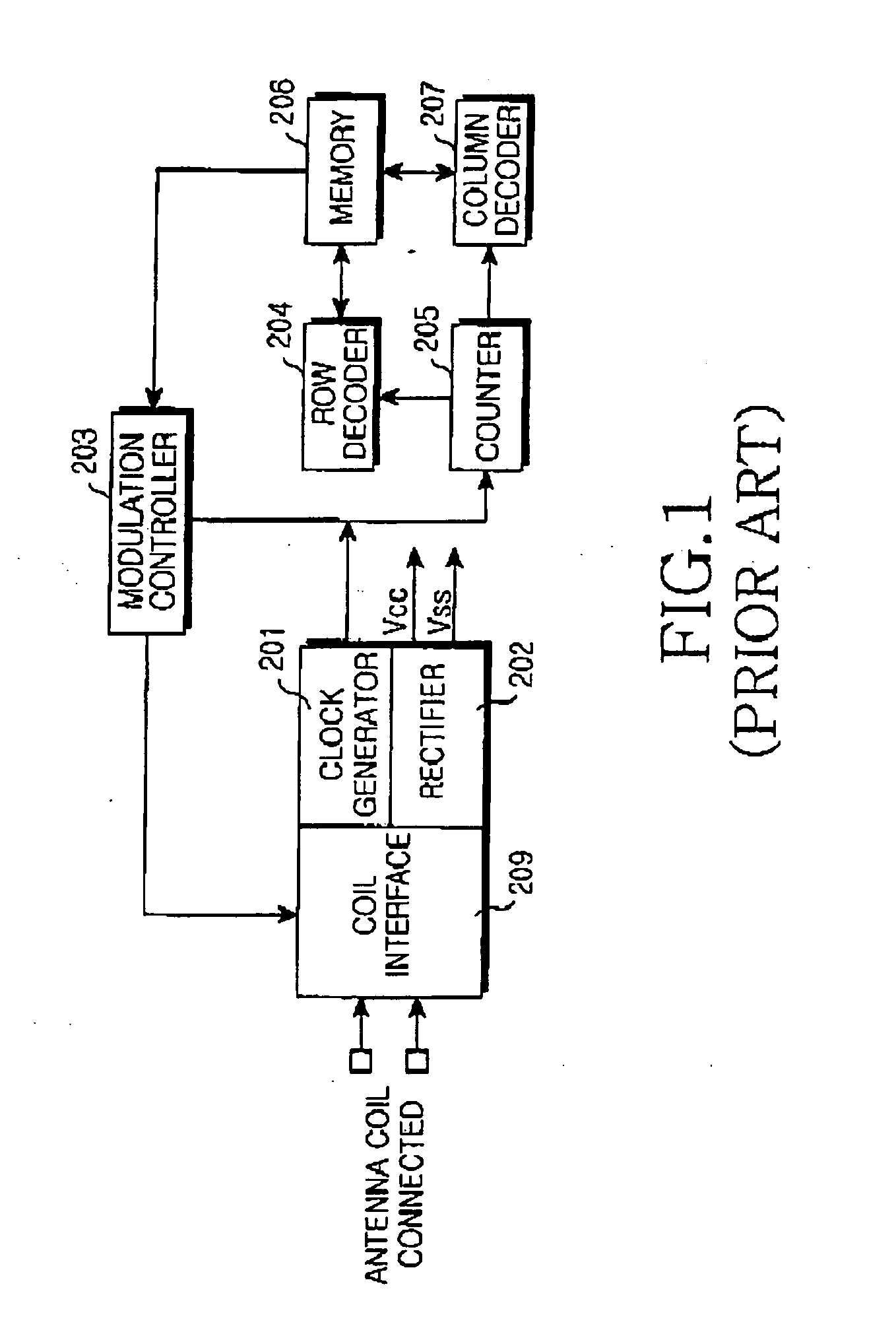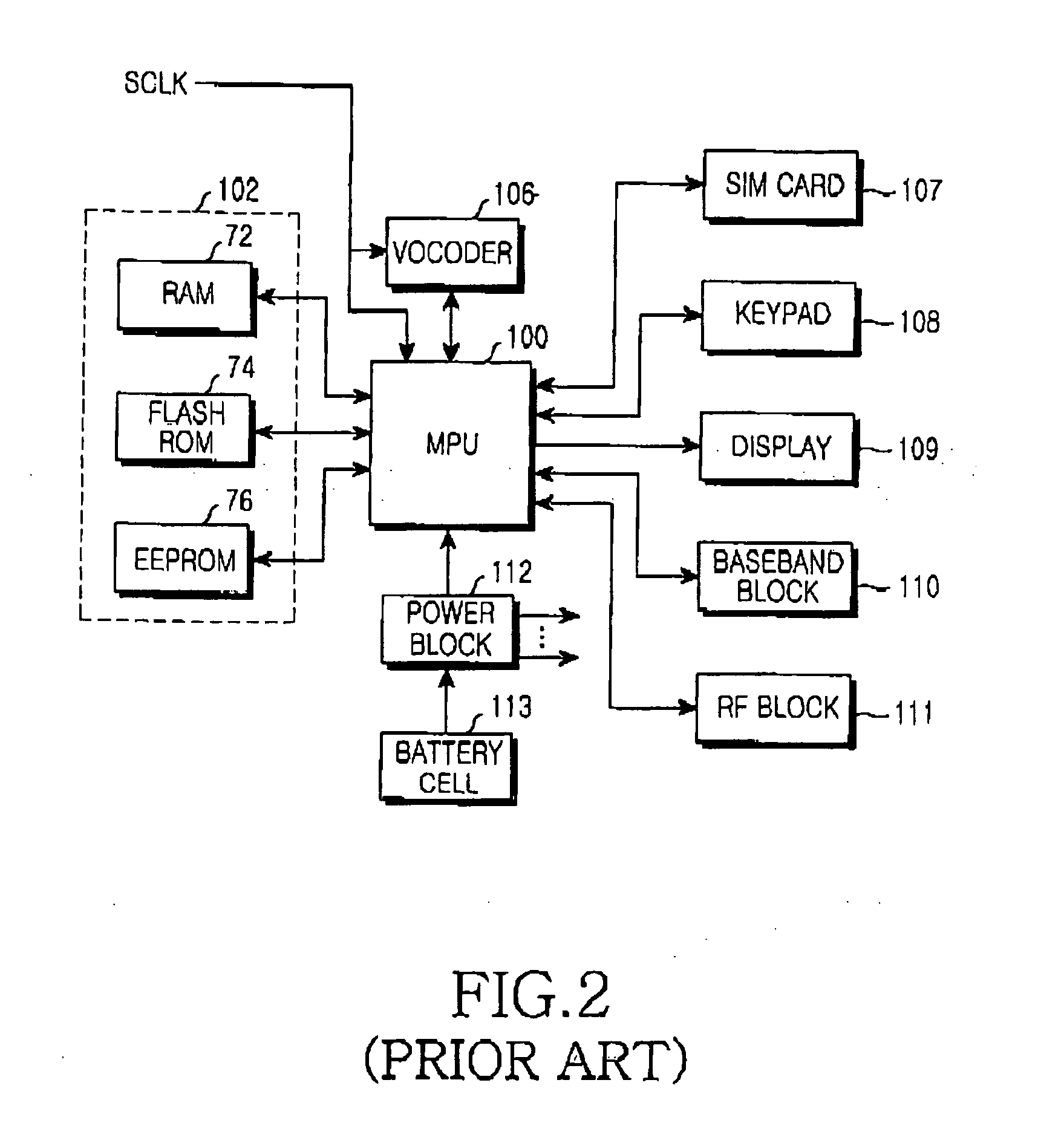Mobile terminal circuit including an RFID tag and wireless identification method using the same
a mobile terminal and wireless identification technology, applied in the field of radio frequency identification (rfid) tags, can solve the problems of inability to propose the connection between the smart card and the mpu or its peripheral circuit, inability to predict the combination of the rfid tag circuit and the terminal circuit, and difficulty in achieving the miniaturization of the mobile terminal
- Summary
- Abstract
- Description
- Claims
- Application Information
AI Technical Summary
Benefits of technology
Problems solved by technology
Method used
Image
Examples
first embodiment
[0036]FIG. 4 is a block diagram illustrating a structure of a mobile terminal including an RFID tag according to the present invention. It should be noted that known elements of the mobile terminal other than the elements related to the connection between the mobile terminal and the RFID tag are not illustrated in the drawing for simplicity.
[0037] According to a first embodiment of the present invention, referring to FIG. 4, an MPU 550A of the mobile terminal includes an RFID codec 404 and an RFID modulator 405, which are elements of an RFID tag. Moreover, the memory portion 102 of the mobile terminal additionally stores RFID data 78 together with mobile terminal protocol data.
[0038] Referring to FIG. 2, the EEPROM 76 of the mobile terminal is an element of the memory portion 102. Commonly, the EEPROM 76 stores initial setup values of the RF block 111, the display 109 and a voice volume, a user defined value such as address book data, and WAP (Wireless Application Protocol) data. H...
second embodiment
[0045]FIG. 5 is a block diagram illustrating a structure of a mobile terminal including an RFID tag according to the present invention, in which main elements of the RFID tag are implemented with one IC (Integrated Circuit). It should be noted that known elements of the mobile terminal other than the part related to the connection between the mobile terminal and the RFID tag are not illustrated in the drawing for simplicity.
[0046] As illustrated in FIG. 5, an RFID codec 404, an RFID modulator 405, a second clock generator 302, and an RFID memory 78 are implemented with one IC 600 (hereinafter, referred to as an “RFID chip” or “RFID module”), and various modifications are available. FIG. 6 illustrates an example of one modification.
[0047] In the structure of FIG. 1, the RFID tag has the rectifier 202 and the clock generator 201. However, in the second embodiment of the present invention, instead of the clock generator 201, the second clock generator 302 receives a system clock SCLK,...
third embodiment
[0050]FIG. 6 is a block diagram illustrating a structure of a mobile terminal including an RFID tag according to the present invention. Compared with the RFID tag illustrated in FIG. 5, the RFID tag illustrated in FIG. 6 excludes the RFID memory 78 from the RFID module 600, and stores RFID data in the memory portion 102 as described in conjunction with FIG. 4.
[0051] As can be appreciated from the foregoing description, the present invention can implement combination of an RFID tag and a mobile terminal while securing miniaturization of the mobile terminal and a stable operation of the RFID tag. In addition, the present invention minimizes the mobile terminal circuit by increasing generalization of elements in implementing the combination.
PUM
 Login to View More
Login to View More Abstract
Description
Claims
Application Information
 Login to View More
Login to View More - R&D
- Intellectual Property
- Life Sciences
- Materials
- Tech Scout
- Unparalleled Data Quality
- Higher Quality Content
- 60% Fewer Hallucinations
Browse by: Latest US Patents, China's latest patents, Technical Efficacy Thesaurus, Application Domain, Technology Topic, Popular Technical Reports.
© 2025 PatSnap. All rights reserved.Legal|Privacy policy|Modern Slavery Act Transparency Statement|Sitemap|About US| Contact US: help@patsnap.com



